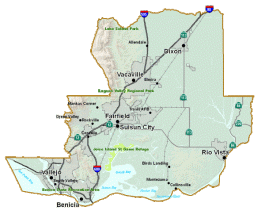Entire Bay Area is back in CDC’s orange and red tiers for COVID spread
San Francisco Chronicle, by Kellie Hwang, Nov. 2, 2021
The entire Bay Area has returned to the Centers for Disease Control and Prevention’s orange “substantial” and red “high” categories of coronavirus transmission — a step backward for some counties, like Marin and San Francisco, where transmission was previously classified as yellow, or “moderate.”
This comes after Marin County lifted its indoor mask mandate on Monday after reaching key COVID-19 benchmarks agreed upon by eight Bay Area counties. However, the mandate is unlikely to be immediately reinstated; the county’s health officer Matt Willis said last week that an increase in cases alone will not determine whether masks come back; rather he will watch hospitalization numbers, which as of Friday were at a four-month low.
San Francisco had reached the “moderate” level last week, but reverted to “substantial” on Tuesday.

Under a framework agreed to by eight Bay Area counties, a county may lift its indoor mask mandate for fully vaccinated people when: 1) its vaccination rate reaches at least 80% or enough time has passed that children 5-11 years old can be fully vaccinated; 2) the county has been in the CDC’s yellow “moderate” level of community transmission for at least three weeks — with tiers defined by case rates and positive test rates; and 3) hospitalization rates remain low.
Four counties — Alameda, Contra Costa, San Francisco and Sonoma — have already eased some rules, allowing fully vaccinated people to go without masks in certain indoor settings including gyms, offices and college classrooms. But masks remain mandatory in shops, restaurants and bars in those counties.
Masks remain optional for vaccinated people in Solano County, the only part of the Bay Area not to reinstate a mask mandate.
In recent weeks, the rate of new coronavirus cases per day has been under 10 per 100,000 people in most Bay Area counties — a rate not seen since mid- to late July, after the delta variant became the dominant strain in California and drove a new surge in cases.
Santa Clara and Marin counties were the first to consistently drop below 10 cases per 100,000, on Sept. 24, and Solano County was the latest, on Oct. 16. Only Sonoma’s case rate is over 10, having trended upward since the beginning of last week. The overall Bay Area case rate is 8.2 cases per 100,000, compared to the statewide case rate that is nearly double that, at 14.34.
At the same time, case rates have largely plateaued in the Bay Area’s counties, much as they have across California, which raises questions about what might happen as we approach the busy holiday season that will increase travel and send people indoors.
Peter Chin-Hong, an infectious disease expert with UCSF, said he doesn’t suspect Halloween will result in a significant uptick in cases because it is “generally a local event, and with high vaccination rates not just in adults, but in adolescents in the Bay Area,” which creates a wall of immunity around younger children.
He said there could be a small uptick in cases during the holidays due to travel to areas with higher transmission rates; waning vaccine immunity; and a more substantial flu season that could increase people’s susceptibility to COVID-19.
“I don’t think this plateau will lead to a surge remotely close to what we saw last winter,” Chin-Hong wrote in an email. “With the approval of vaccines in children 5-11, this will further boost community immunity to keep cases down.”
Here is where each Bay Area county stands on COVID metrics and the mask mandate criteria as of Nov. 2.
Note: The 7-day average case rates are from Nov. 1 and come from state data. The weekly new cases per 100,000 over the past seven days and positive test rates are from the CDC.










You must be logged in to post a comment.